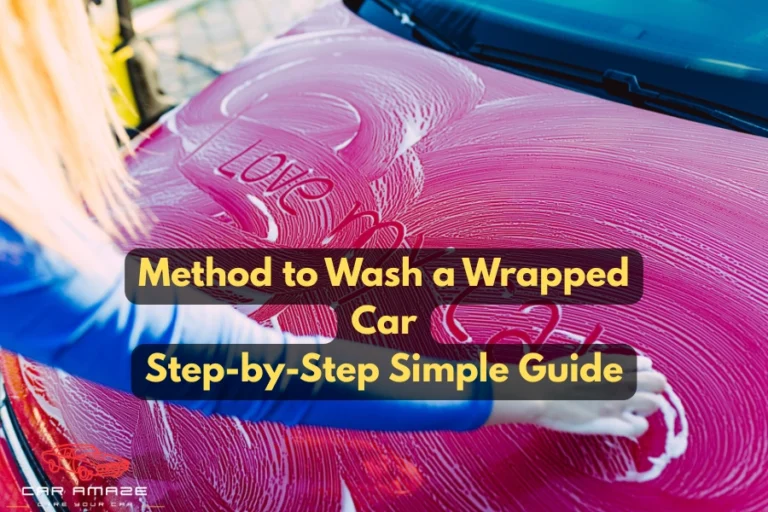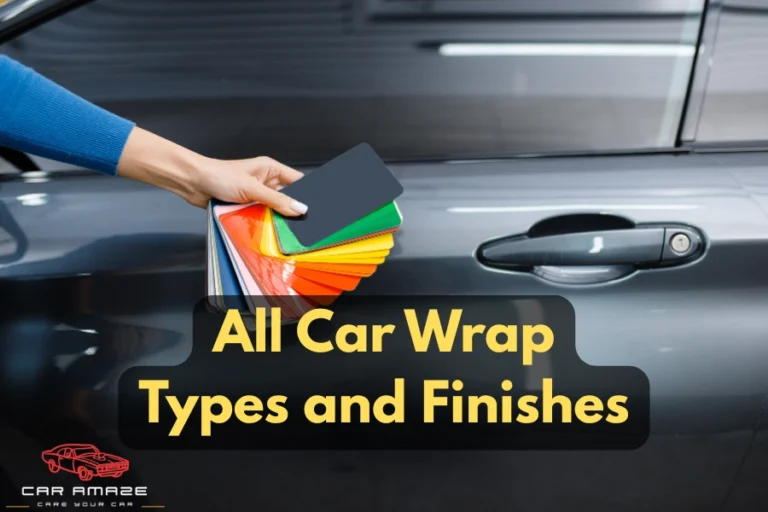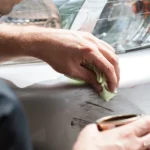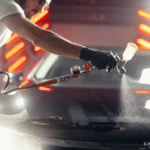How Hard is it to Wrap Your Own Car? Time, Effort, Cost
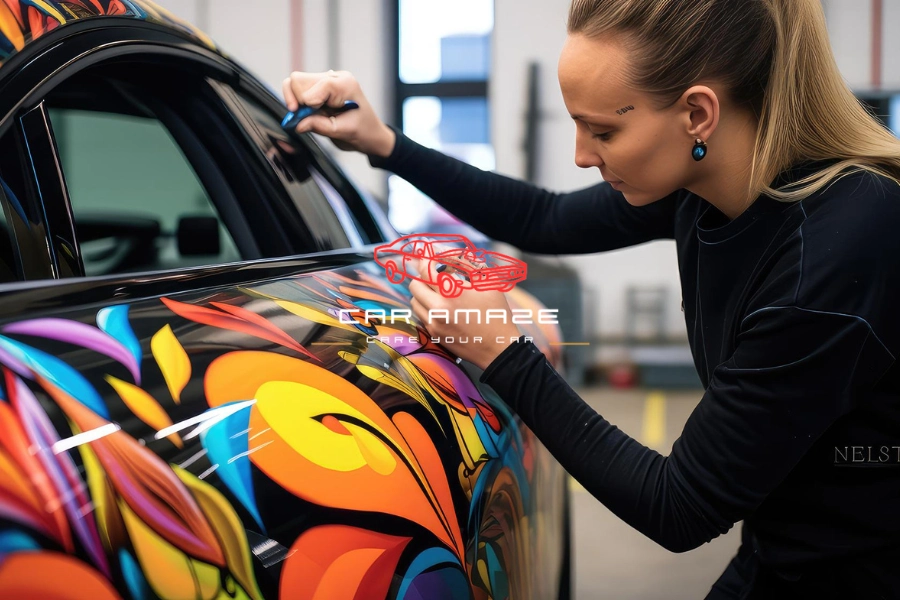
Car wrapping is a great way to transform the appearance of your car. Lots of people ask, how hard is it to wrap your own car? This article will address that question and provide information on the time, effort, and expense involved. Car wraps not only serve to give your car a new appearance but also serve to protect the original paint. No matter where you are in the United States, Europe, or the world, the fundamentals of car wrapping do not change much. Let us go through every step together!
Table of contents
- Understanding DIY Car Wrapping
- How Hard is it to Wrap Your Own Car? Accessing Difficulty Level
- Time Commitment for a DIY Car Wrap
- How Hard is it to Wrap Your Own Car? Effort and Preparation
- Cost Analysis of DIY Car Wrapping
- Common Challenges in DIY Car Wrapping
- Is DIY Car Wrapping Worth It?
- Conclusion
- FAQs
Understanding DIY Car Wrapping
Car wrapping means covering your car’s exterior with a special vinyl material. This vinyl can come in many colors and finishes, such as glossy, matte, or even carbon fiber. The wrap not only changes the appearance of your car but also protects the paint from scratches and small chips. Car wraps can be removed later without damaging the original finish. This method is so popular since it enables owners of cars to change the style of their cars without the long-term investment of new paintwork.
Benefits of Wrapping Your Own Car
There are various advantages to having your car wrapped, particularly if you do it yourself.
- Cost Savings: Homemade wraps tend to be significantly less expensive than hired work.
- Customization: You can select any color or finish that suits your character.
- Protection: The vinyl protects it from minor scratches and weathering.
- Resale Value: A wrap can preserve the original paint of the car, which may come in handy when you want to sell it in the future.
These advantages demonstrate why so many vehicle owners look into wrapping their own vehicles. The response to how difficult it is to wrap your own car relies on your attention to detail and patience, but the benefits can be highly rewarding.
Types of Car Wrap Materials
There are numerous types of materials utilized in car wrapping. The most prevalent ones are:
- Gloss Wraps: Smooth and shiny, used for a bright appearance.
- Matte Wraps: Flat finish and contemporary feel.
- Satin Wraps: A combination of gloss and matte provides a distinct look.
- Carbon Fiber Wraps: Mimic the appearance of high-end carbon fiber components at a lower price.
This diversity ensures that everyone will be able to find a design that suits them best as well as their pockets.
How Hard is it to Wrap Your Own Car? Accessing Difficulty Level
Here are the basic things to know for accessing the difficulty level of wrapping your own car:
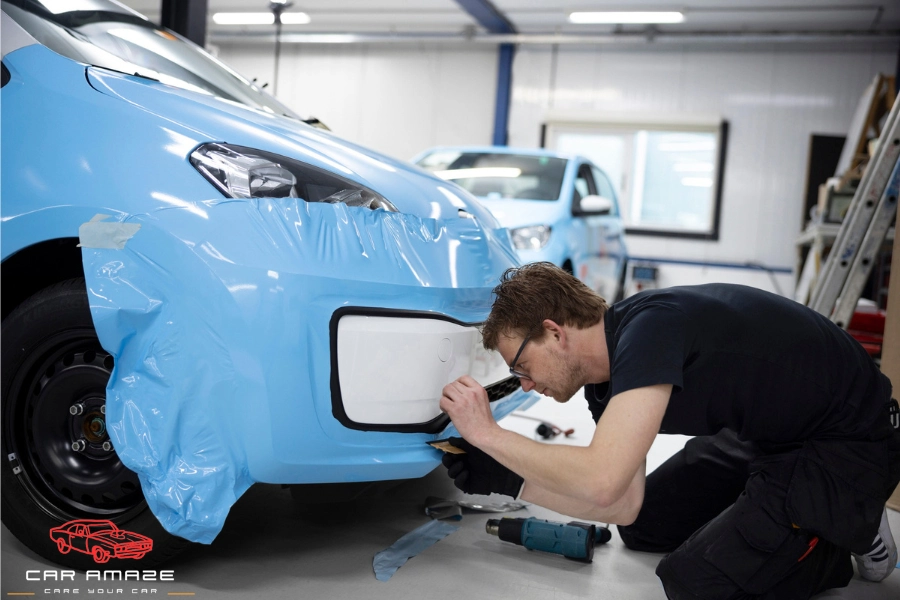
1. Is Wrapping Your Own Car Hard?
Most people wonder how hard it is to wrap your own vehicle. The answer is not straightforward. For some individuals, it is a great weekend DIY project, but for others, it can be extremely difficult. The level of difficulty is based on the shape of your vehicle, the type of wrap material you use, and your own capabilities. If you pay close attention to what you are doing and work slowly, you can get a decent outcome. But the process needs patience and detail.
2. Skills Needed for DIY Car Wrapping
DIY car wrapping requires several skills. You must be able to work with your hands and have good eye-hand coordination. Patience is extremely necessary since you need to work slowly to avoid errors. Simple measuring and cutting skills are also required. If you feel that wrapping your own vehicle is hard, there are many tutorials on the internet that demonstrate that even novices are able to master these skills with experience. It is helpful to listen to video instructions and follow step-by-step tutorials. Keep in mind that practice and planning are the secrets.
3. Can Beginners Wrap a Car Successfully?
Yes, novices can wrap a car effectively with proper preparation, even if they don’t have prior experience. A lot of individuals have learned how to wrap their own vehicles through the use of step-by-step guides. Begin with a small area and build up your confidence. Practice wrapping on a flat area first before proceeding to the curves and edges of your vehicle. With patience and time, you can master the difficulties. Actually, most DIY people say that the first project they did was not ideal, but they got better with each new try.
4. How Hard is it to Wrap Your Own Car with a Complex Body?
It is easier to wrap a car with a straightforward shape. But the question is, how hard is it to wrap your own car with a complex body? Vehicles with complicated bodies, such as sports cars, may prove to be trickier to cover smoothly. Each curve needs a little more attention to prevent air bubbles or wrinkles. If you are curious to know how difficult it is to wrap your own vehicle when the body is complicated, understand that more time and a light hand are required. It may help to have a friend assist you during the process so that you can manage the material more easily.
5. Do You Need Professional Training to Wrap a Car?
While formal training will enhance your skills, it is not always required. Most car owners wrap their own cars successfully by using online tutorials and learning about smaller jobs. Professional installers have years of experience and advanced tools, but if you take your time, you can get good results without training. Hiring a professional or wrapping on your own affects how long it takes to wrap a car.
Time Commitment for a DIY Car Wrap
When planning to wrap your own car, estimating the time for wrap installation is necessary. Below is the description of time required and factors affecting the time.
1. How Long Does It Take to Wrap a Car?
The time needed to wrap a car varies widely. On average, a DIY car wrap can take anywhere from 8 to 20 hours to complete. The time depends on your skill level, the complexity of your car’s design, and the number of people helping you. Professionals might finish a wrap in just a few hours, but for a beginner, taking your time is important to avoid mistakes and ensure a neat finish.

2. Factors Affecting Wrapping Time
A number of factors determine how hard it is to wrap your own car and how long the wrapping process will take:
- Experience: The more you practice, the quicker you’ll be.
- Car Size: The larger the car, the more material and time it takes to build it.
- Complexity: Curved or intricate designs make the process take longer.
- Weather Conditions: A steady, moderate temperature allows the vinyl to stick better.
Each of these influences the process, and planning in advance will allow you to set realistic expectations for your project.
3. Time Comparison: DIY vs. Professional Wrapping
Professional car wrapping services typically take 4 to 8 hours to complete a full wrap. A DIY wrap can take twice the duration or even longer, particularly for beginners. Experts possess specialized equipment and a team of professionals who work efficiently. Still, most car owners opt for the DIY path to save on costs and relish the designing experience. Always keep in mind that if you are wondering how long car wraps last, it depends on the level of installation and skill level of workers.
4. How to Speed Up the Wrapping Process
If you wish to wrap faster, some easy tips follow:
- Plan Ahead: Have all your tools and materials ready to go before beginning.
- Work in a Clean Environment: This will keep dirt from adhering to the vinyl.
- Practice on Small Surfaces: Familiarize yourself with handling the wrap material.
- Get Help: A friend can assist with handling large pieces of vinyl.
Adopting these recommendations will enable you to work faster without compromising the quality of your finish.
How Hard is it to Wrap Your Own Car? Effort and Preparation
Here is a brief of the effort, preparations, and tools required for wrapping your own car, which will help you estimate how hard it is:
1. Preparing Your Car for Wrapping
Preparation is essential when wrapping your vehicle. Begin by washing the vehicle thoroughly to get rid of dirt, grease, and debris. Use a mild soap and a soft cloth. Next, dry the vehicle thoroughly to avoid any water spots. It is also essential to take off any loose parts or accessories that could interfere. A clean, smooth surface makes the vinyl adhere better and gives a neat finish.
2. Tools Needed for DIY Car Wrapping
You may need some essential tools to wrap your car. These are the most critical ones:
Squeegee: For smoothening out the vinyl.
Heat Gun: This is used to make the vinyl more pliable.
Utility Knife: For cutting the material.
Measuring Tape: To achieve precise measurements.
Microfiber Cloth: For surface cleaning.
Keeping these tools at hand before you begin work will save you time and make the process easier.

3. Step-by-Step Guide to Prepping Your Car
Following is a straightforward step-by-step guide for preparing your car:
- Clean the Surface: Wash and dry your vehicle.
- Inspect for Damage: Check for scratches or dents requiring repair.
- Remove Obstructions: Remove mirrors, badges, or trim if necessary.
- Measure Areas: Mark the areas requiring wrapping.
- Lay Out Your Tools: Place your squeegee, heat gun, and other tools within easy reach.
Following these steps will help ensure that your wrap goes smoothly and looks great.
4. How to Ensure a Smooth Wrapping Surface
A smooth surface is crucial for a good car wrap. Start by cleaning the car’s surface with a microfiber cloth and a gentle cleaner. Use a degreaser if necessary to remove any stubborn dirt. Inspect for scratches or dents, which can lead to bumps in the wrap. Sand out minor flaws and ensure the car is dry. A smooth surface will ensure even adhesion of the vinyl and minimize the possibility of air bubbles or wrinkles.
Cost Analysis of DIY Car Wrapping
The price is based on the quality of the vinyl and the size of your car. Professional wraps are more costly, normally between $1,500 for small vehicles and $5,000 for large vehicles. You can reduce the cost of wrapping a car by doing it yourself, but keep in mind that spending money on good materials and tools is necessary for a long-lasting finish.
1. Comparing DIY vs. Professional Wrapping Costs
Cost-wise, when you compare costs, DIY wrapping is typically less costly than using a professional service. These DIY projects make it hard to wrap your own car. A professional installation may tack on labor costs in addition to material costs. With DIY, you only pay for materials and the time that you put into it. Nonetheless, note that a professional wrap may have a guarantee of professional quality. If you do not mind the process and you have time to invest, the DIY approach is an excellent method of saving money without sacrificing the quality finish.
2. Hidden Costs of DIY Car Wrapping
There are also underlying expenses in wrapping your own vehicle. These could be additional tools, cleaning agents, and, in some cases, even re-doing parts if there are errors. You may also have to spend time mastering the techniques themselves, which can be considered an opportunity cost. Even if the material expense is less, these elements need to be factored in when you’re planning your project.
Common Challenges in DIY Car Wrapping
Here are some common challenges that make it hard to wrap your own car:
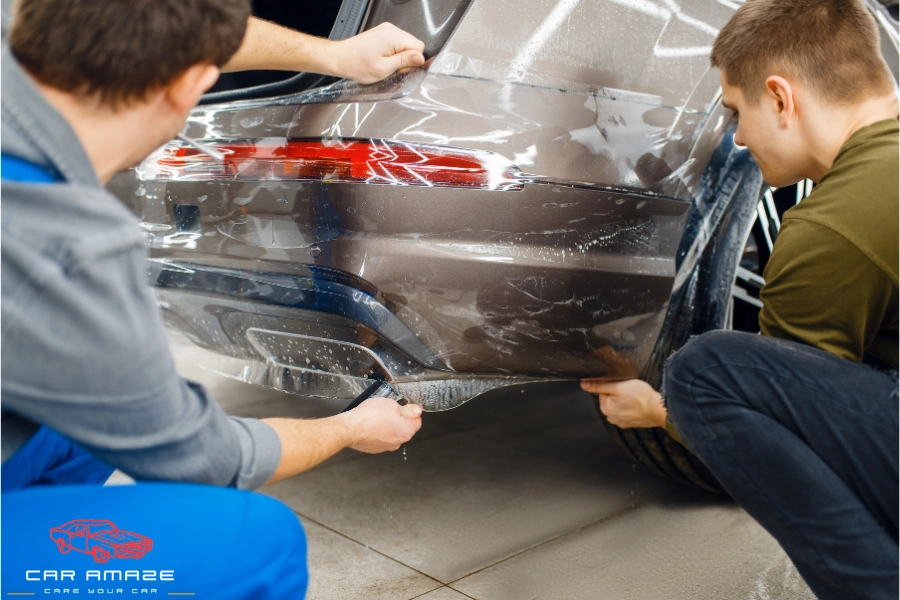
1. Mistakes to Avoid When Wrapping Your Car
There are a few frequent errors to be on the lookout for when wrapping your car. Rushing, failing to adequately prepare the surface, or using improper tools can make it hard to wrap your own car. Don’t pull the vinyl too tightly or skip cleaning. Working slowly and having a good guide is the way to go.
2. Troubleshooting Common Wrapping Issues
Despite preparation, problems can arise when car wrapping. Some common issues are air bubbles, wrinkles, and uneven edges. If you notice air bubbles, carefully lift the vinyl and smooth it out once more. For wrinkles, using heat from a heat gun will cause the vinyl to relax and settle into position. Patience and a steady hand are the best solutions for these problems. Several DIY websites have advice and hacks to get over these problems.
3. What to Do If Your Wrap Has Air Bubbles?
Air bubbles will cause your car wrap to appear uneven. If bubbles are noticed, a small device or a squeegee is used to press the air slowly out. It is also possible to carefully peel back the edge of the vinyl and reapply it, smoothing out the bubble. In a few instances, a bit of heat from a heat gun will cause the material to stick better. Going slowly and carefully will minimize the possibility of having air bubbles in the first place.
4. Fixing Peeling and Wrinkled Wraps
Peeling and wrinkling will result if the vinyl is put on improperly. Fix this by softening the material with a heat gun and forcing it flat using a squeegee. In case an area is seriously wrinkled, that area might have to be taken off and replaced. Be careful and take your time. This will save you from bigger issues down the line.
5. Preventing Stretching and Tearing of the Wrap
To avoid stretching or tearing the vinyl, always handle it gently. Use proper tools and avoid pulling the material too hard. It is important to work in a clean environment and keep the vinyl at the right temperature. Excessive heat or cold can make the material more brittle or too soft. Following manufacturer guidelines on handling can prevent many issues during installation.
6. Effective Techniques for a Smooth Application
For a smooth wrap, use small, overlapping sections when applying the vinyl. Work from one end of the car to the other, gradually smoothing out the material as you go. Keep a squeegee at hand to remove any bubbles immediately. Many experts suggest practicing on a smaller surface first to build confidence. Starting from the larger and complete area can sometimes make it hard to wrap your own car.
7. Working Alone vs. Having Assistance for Wrapping
Although some individuals prefer to work on their own, having a second set of hands can be extremely useful. A helper can make it easier to handle big pieces of vinyl and iron out stubborn areas. Moreover, the helper can also help you in choosing the best option from multiple smart car wrap ideas. Having a partner can also accelerate the process and make it easy to wrap your own car.
8. Fixing Mistakes During the Wrapping Process
Errors can occur during a car wrap, but they are not the apocalypse. If you see an error, halt and evaluate the issue. Occasionally, a simple touch-up using a heat gun or squeegee will resolve the problem. If a major error is made, take a thoughtful approach to removing and reinstalling the vinyl. These errors can make it hard to wrap your own car, but learning from them is part of the process.
Is DIY Car Wrapping Worth It?
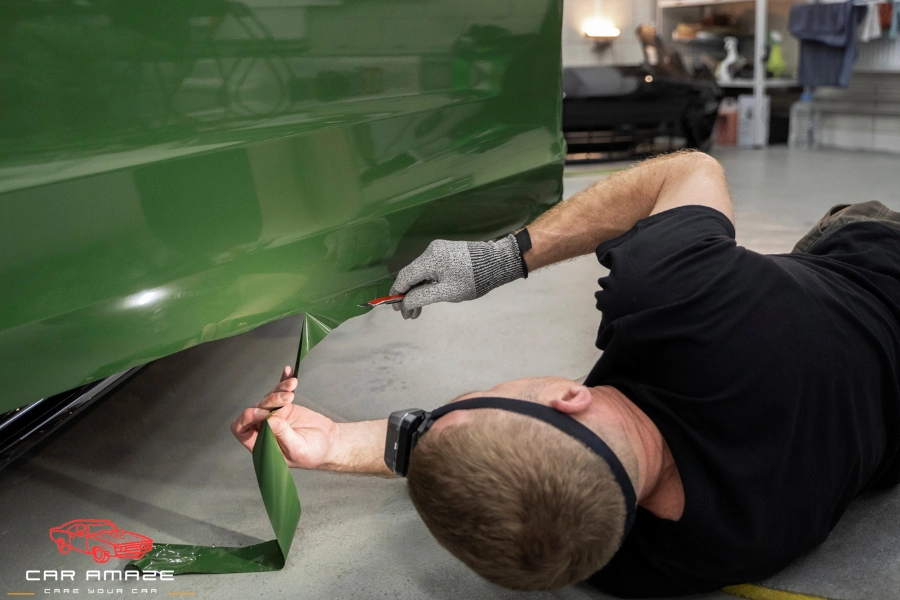
Whether to wrap your car yourself will depend on your budget, skill level, and the amount of time you can spare. The following are some advantages and disadvantages:
Advantages
- Less expensive than professional wrapping.
- Total control over the design.
- A recreational activity that can develop new skills.
Disadvantages
- Demands patience and meticulous planning.
- Greater likelihood of mistakes without specialized equipment.
- Time-consuming, particularly for beginners.
When comparing how hard it is to wrap your own car for a DIY project versus paying for an expert, it’s easy to see that there are advantages to both. A DIY wrap is definitely something you should attempt if you are looking to save cash and enjoy a fun challenge. But if you are short on time or concerned about errors, a professional may be the way to go. Always think of your own abilities and intentions before deciding.
Conclusion
Wrapping your own car is a difficult but satisfying task. We have discussed what car wrapping is, the abilities required, the time and expense involved, and the typical problems you may encounter. So, how hard is it to wrap your own car? Actually, it depends on numerous aspects, such as vehicle size, vehicle shape complexity, and skill level. With careful planning, patience, and the right tools, you can get a great result and have a one-of-a-kind, customized look for your vehicle.
FAQs
Is wrapping your car difficult?
Wrapping your car is difficult if you are a novice at the task. The difficulty is based on your car’s design, the quality of materials you use, and your skill level. Most novices are successful by using step-by-step instructions and testing on small areas first. With time and patience, most individuals get better and have a smooth finish.
Is it cheaper to wrap your car yourself?
Yes, it is cheaper to do it yourself than to pay a professional. A do-it-yourself kit will cost between $500 and $1,500, whereas professional work will cost between $2,000 and $5,000. But add any additional costs for tools or errors. Most people find the savings worth the additional time and effort.
Can a person wrap their own car?
Yes. With proper instructions and planning, the majority of individuals can effectively wrap their own vehicles. Begin with proper preparation, utilize high-quality materials, and take the time to guide yourself through the process. Even if errors are made, they serve as opportunities for learning, which enhance your technique.
Do you need to be certified to wrap cars?
There is no certification for DIY car wrapping. Professionals usually have the experience and training to deliver a flawless finish. For a DIY project, learning from tutorials, guides, and practice would be sufficient to produce a good outcome without certification.
Is car wrapping profitable?
Car wrapping can be profitable if you use it for advertisement purposes or begin a small business. Numerous businesses use vehicle wraps to advertise their business. For personal use, although cost-cutting is major, the real advantage is in customizing and keeping the car safe rather than direct profit.
